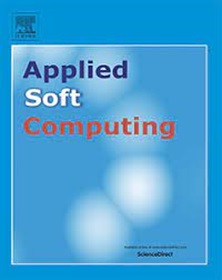Conditional generative adversarial networks for the generation of strong ground motion parameters using KiK-net ground motion records
IF 7.2
1区 计算机科学
Q1 COMPUTER SCIENCE, ARTIFICIAL INTELLIGENCE
引用次数: 0
Abstract
Prediction of ground motion parameters is important for seismic risk analysis and the seismic design of structures. The limited availability of strong ground motion records (peak ground acceleration (PGA) > 100 gal) limits the application of machine learning techniques in this domain. In this study, we utilized the KiK-net database to identify three site parameters—VS30, VS-Zhole, and borehole depth—corresponding to the peak underground acceleration (PUA) on the downhole and spectral acceleration (Sa) across 15 different periods as input features for the machine learning model. The output parameters were PGA and Sa across 15 different periods. Pairs of strong ground motion records (PGA > 100 gal) are extracted from the original KiK-net database and processed using a conditional generative adversarial network (cGAN) model to synthesize ground motion parameters, then the original KiK-net database is supplemented. Regression prediction tests were performed on both the original and augmented databases and evaluated using three regression metrics: root mean square error (RMSE), mean absolute error (MAE), and R2. The findings indicate that the model trained with synthetic data generated by the cGAN enhances the prediction accuracy of ground motion parameters. A comparative analysis of the ground motion amplification coefficients between station records and cGAN-generated data across various spectral periods was performed. The amplification coefficients across different spectral periods aligned with the ground-motion records, thereby validating the reliability of the cGAN-generated synthetic ground-motion data from a seismological perspective. Furthermore, the ground motion parameters produced by the cGAN represent a valuable resource for future machine learning investigations.
求助全文
约1分钟内获得全文
求助全文
来源期刊

Applied Soft Computing
工程技术-计算机:跨学科应用
CiteScore
15.80
自引率
6.90%
发文量
874
审稿时长
10.9 months
期刊介绍:
Applied Soft Computing is an international journal promoting an integrated view of soft computing to solve real life problems.The focus is to publish the highest quality research in application and convergence of the areas of Fuzzy Logic, Neural Networks, Evolutionary Computing, Rough Sets and other similar techniques to address real world complexities.
Applied Soft Computing is a rolling publication: articles are published as soon as the editor-in-chief has accepted them. Therefore, the web site will continuously be updated with new articles and the publication time will be short.
 求助内容:
求助内容: 应助结果提醒方式:
应助结果提醒方式:


